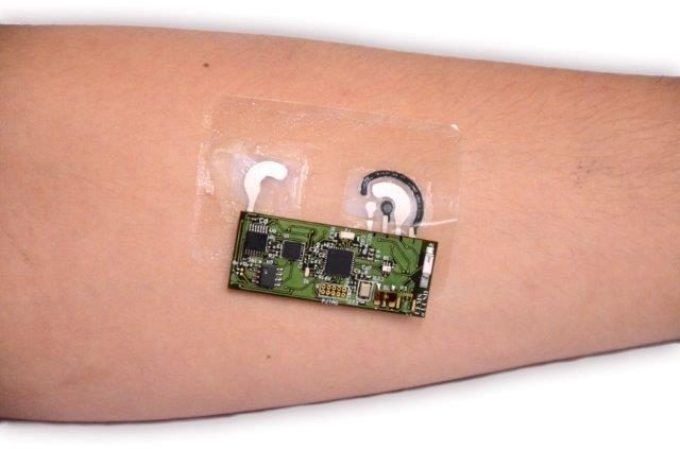Sep 22 2016
Errors in judgment can occur when a person has consumed too much alcohol, for example driving a vehicle when they are impaired. To help alcohol consumers realize quickly when they have had enough, researchers have built a flexible, wearable patch capable of detecting the blood-alcohol level of a person from sweat. This monitor functions quickly and can transmit the results wirelessly to a smartphone or other device. The details of the device have been reported in the ACS Sensors journal.
 A skin patch that detects blood alcohol content could help drinkers know when they’ve had enough. (Credit: Wang lab)
A skin patch that detects blood alcohol content could help drinkers know when they’ve had enough. (Credit: Wang lab)
According to the Centers for Disease Control and Prevention, every 53 minutes one person dies in an alcohol-related car accident in the U.S.
Currently ignition interlock devices are available commercially as a way to stop drunk drivers from starting a car. But these devices rely on breath analysis, which can be influenced by numerous factors such as temperature, humidity, and whether a person has used mouthwash. A recent study has showed that a more consistent real-time indicator of blood alcohol content is sweat.
So far there are about two transdermal sensors that have been created to measure alcohol levels in sweat; however users need to wait up to two hours to get the results. Joseph Wang, Patrick Mercier and colleagues at the University of California, San Diego, are focused on creating a more practical model.
The researchers used temporary-tattoo paper to create a patch that analyzes blood alcohol content in a non-invasive manner within three quick steps. It stimulates sweat by delivering a small dosage of a drug called pilocarpine across the skin. An enzymatic reaction results in the electrochemical detection of the alcohol content. The data is sent by a flexible electronic circuit board via a Bluetooth to a mobile device or laptop. The steps only take eight minutes or less from start to finish. Besides being able to connect the sensor to vehicles’ ignition interlock systems, it can also serve as a simple tool for bartenders, law enforcement or friends to use, explained the researchers.
The researchers received funding from the National Institute of Biomedical Imaging and Bioengineering, the Defense Threat Reduction Agency, and the University of California, San Diego, Center for Wearable Sensors.